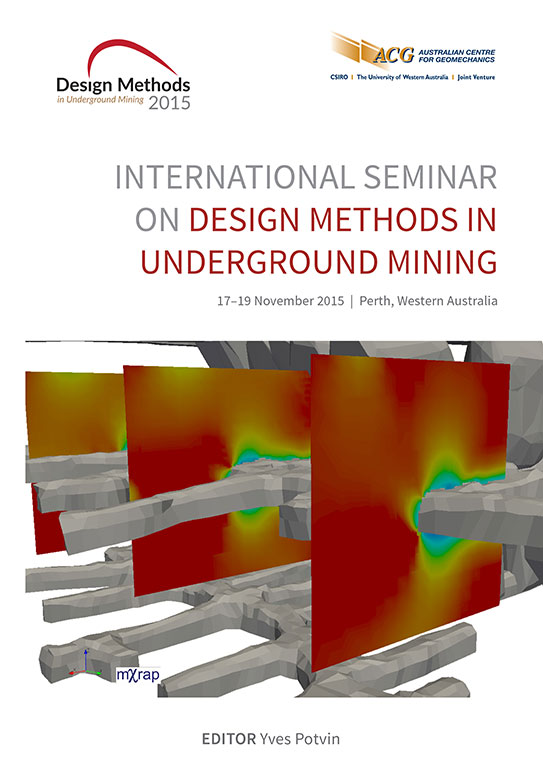Room and pillar stability analysis using linear elastic modelling and probability of failure — a case study

|
Authors: Walls, EJ; Mpunzi, P; Joughin, WC |
DOI https://doi.org/10.36487/ACG_rep/1511_02_Walls
Cite As:
Walls, EJ, Mpunzi, P & Joughin, WC 2015, 'Room and pillar stability analysis using linear elastic modelling and probability of failure — a case study', in Y Potvin (ed.), Design Methods 2015: Proceedings of the International Seminar on Design Methods in Underground Mining, Australian Centre for Geomechanics, Perth, pp. 95-106, https://doi.org/10.36487/ACG_rep/1511_02_Walls
Abstract:
A stability analysis was carried out for an underground narrow vein room and pillar operation using linear elastic numerical modelling combined with a probability of failure (PoF) approach. The as-mined layout was input into the model to identify areas of increased pillar stress and obtain an average pillar stress (APS) for each pillar in an identified area. Pillar dimensions were measured from the given layout to calculate an empirical pillar strength (PS) using the Hedley and Grant (1972) approach. A Factor of Safety (FS) was evaluated for each pillar from the APS and PS, and the risk of failure for selected areas was estimated based on the proportional number of pillars with a sub-critical FS. As a result, three critical areas on the operation were identified for inspection and implementation of additional monitoring and/or remedial action. A statistical simulation was further carried out using the Monte Carlo method to evaluate the impact of measured and observed variability in pillar size on the design. The final design proposed for the operation was based on a revised pillar strength factor (K), taking into account the effect of mining practices on the empirical design. (Note: confidentiality limitations apply such that the operation is undisclosed and target areas are arbitrarily renamed).
References:
Esterhuizen, GS 2006, ‘An evaluation of the strength of slender pillars’, Proceedings of the SME Annual Meeting and Exhibition, Society for Mining, Metallurgy and Exploration, Inc., Littleton, CO, preprint no. 06-003, 7 p.
Hedley, DGF & Grant, F 1972, ‘Stope and pillar design for the Elliot Lake uranium mines’, Bulletin of the Canadian Institute of Mining and Metallurgy, no. 65, pp. 37-44.
Laubscher, DH 1990, ‘A geomechanics classification system for the rating of rock mass in mine design’, Journal of the Southern African Institute of Mining and Metallurgy, vol. 90 no. 10, pp. 257-273.
Metropolis, N & Ulam, S 1949, ‘The Monte Carlo Method’, Journal of the American Statistical Association, vol. 44, no. 247,
pp. 335-341.
Salamon, MD, Canbulat, I & Ryder, JA 2005, Development of seam-specific strength formulae for South African collieries, final report, prepared for Coaltech 2020, Marshalltown.
© Copyright 2025, Australian Centre for Geomechanics (ACG), The University of Western Australia. All rights reserved.
View copyright/legal information
Please direct any queries or error reports to repository-acg@uwa.edu.au
View copyright/legal information
Please direct any queries or error reports to repository-acg@uwa.edu.au